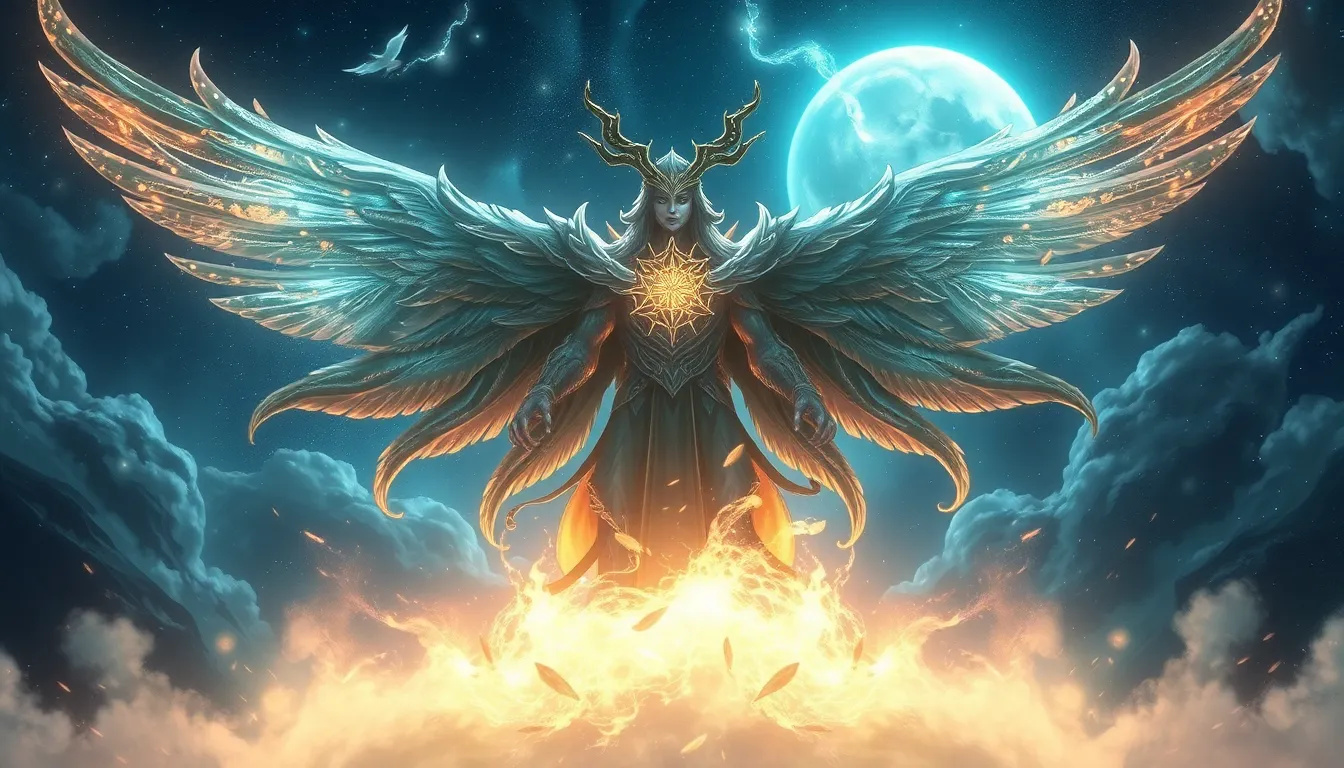The Sacred Chamber: Hidden Spaces in Mythology
I. Introduction to Sacred Spaces in Mythology
Sacred chambers have been a profound element in various mythologies around the world. These hidden spaces are often imbued with spiritual significance, serving as places of worship, burial, or transition to the afterlife. They reflect the cultural values and beliefs of the civilizations that created them.
The importance of these hidden spaces in cultural narratives cannot be overstated, as they provide insights into the collective psyche and spirituality of a people. This article will explore the concept of sacred chambers across different cultures, delve into specific mythologies, and analyze their enduring significance in both ancient and modern contexts.
II. The Concept of Sacred Chambers Across Cultures
Sacred chambers often share common themes, such as:
- Connection to the divine
- Places of transformation or transition
- Associated with death and the afterlife
However, interpretations of these sacred spaces can vary significantly among cultures. For example, while some view them as literal burial sites, others may see them as metaphysical realms. Each culture imbues its sacred chambers with unique meanings, often tied to their religious practices and beliefs.
In many religions, sacred chambers serve vital roles, such as:
- Hosting rituals and ceremonies
- Providing a sanctuary for worship
- Acting as symbols of the universe’s mysteries
III. The Sacred Chamber in Ancient Egyptian Mythology
In Ancient Egypt, sacred chambers were epitomized by the burial chambers within pyramids. These chambers were not only tombs but also gateways to the afterlife, where the deceased would embark on a journey through hidden spaces to reach the realm of the Gods.
The significance of these burial chambers can be seen in the elaborate preparations for the afterlife, including:
- Embalming the body
- Placing grave goods for the journey
- Conducting rituals to ensure safe passage
Osiris, the god of the afterlife, was closely associated with these sacred chambers, symbolizing resurrection and eternal life. His story reflects the deep connection Egyptians had with life, death, and the sacred spaces that facilitated this transition.
IV. The Underworld in Greek and Roman Mythology
The concept of Hades in Greek and Roman mythology represents a sacred, hidden chamber where souls journey after death. Hades, often depicted as a shadowy realm, is not merely a place of punishment but also a necessary passage for souls to reach their final destinations.
The journey of souls through hidden realms is significant, emphasizing themes of fate and the afterlife. Stories such as that of Orpheus and Eurydice illustrate the emotional weight of these sacred spaces, where love and loss intertwine within the confines of the underworld.
V. Sacred Chambers in Hindu Mythology
In Hindu mythology, the inner sanctum of temples, known as the garbhagriha, serves as a sacred chamber where the deity resides. This space is considered the heart of the temple, embodying the divine presence and facilitating a connection between the worshipper and the divine.
Mythological narratives involving hidden spaces, such as the caves of the Himalayas, also play a critical role in Hindu thought. These caves are often seen as places of meditation and enlightenment.
Shiva, one of the principal deities, is linked to sacred chambers found in Mount Kailash, symbolizing the ultimate goal of spiritual realization.
VI. Native American Mythology and Sacred Spaces
For many Native American cultures, the Earth itself is viewed as a sacred chamber, rich with spiritual significance. The landscapes—rivers, mountains, and caves—are often seen as living entities filled with stories and lessons from ancestors.
Many Native American myths speak of hidden realms that represent cultural and spiritual beliefs. Caves and natural formations serve as essential elements in these stories, often associated with creation, spirit journeys, and ancestral wisdom.
VII. The Role of Sacred Chambers in Asian Mythology
In Buddhism, hidden enlightenment spaces, such as the caves of Dunhuang, represent sacred chambers where monks sought solitude and spiritual clarity. These caves are adorned with intricate murals and texts that reflect the teachings of Buddhism.
Chinese mythology highlights sacred mountains, which are often seen as hidden chambers of divine energy. These mountains are revered as places where humans can connect with the celestial realm.
In Shinto, the sacred spaces within nature, such as groves and mountains, are considered chambers where kami (spirits) reside, emphasizing the deep reverence for nature found in Japanese culture.
VIII. The Symbolism of Sacred Chambers in Modern Mythology
In contemporary literature and art, sacred spaces continue to be a powerful symbol. Modern interpretations often reflect ancient beliefs, showcasing the enduring legacy of hidden spaces in popular culture.
These representations can be found in various forms, including:
- Fantasy novels depicting mystical realms
- Films exploring themes of the afterlife
- Art that invokes feelings of mystery and spirituality
IX. Comparative Analysis of Sacred Chambers
Across various mythologies, similarities and differences in sacred chambers reveal universal themes of mystery and spirituality. While the physical forms of these chambers may differ, the underlying concepts of transition, connection to the divine, and the afterlife resonate across cultures.
The impact of geography and culture significantly shapes the concept of sacred chambers, influencing how different societies interpret these hidden spaces and their significance in their narratives.
X. Conclusion: The Enduring Mystique of Hidden Spaces
The exploration of sacred chambers in mythology unveils a rich tapestry of beliefs and practices that have shaped human understanding of the divine and the afterlife. These hidden spaces, whether in ancient tombs, natural formations, or artistic representations, continue to inspire awe and contemplation. The enduring mystique of sacred chambers invites us to ponder our own spiritual journeys and the hidden spaces within our lives.



